By Iris Farrou
30 Sep, 2023
Breast Cancer, Breast health, Lifestyle Tips, Prevention, Procedures, Queer Health, Women's Health
boob job, breast, breast augmentation, Breast cancer, breast lift, chest masculinization, cosmetic, gender affirming surgery, how to fix breast shape, implants, lumpectomy, male breast cancer, male breast reduction, mastectomy, men with breast cancer, partial, reconstruction, reduction, remove implants, surgery, top surgery
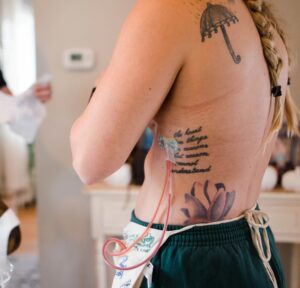
The conversation around breast reconstruction surgeries focuses on women who have had either a mastectomy or a lumpectomy done and wish to reconstruct their breasts once they are cancer free. This is a wonderful opportunity for women who are cancer survivors, and of course, a very body-affirming procedure as well! According to 2020 data from the American Society of Plastic Surgeons, breast augmentation surgery has been in the top 5 cosmetic surgeries since 2006, followed by breast implant removals, lifts, and reductions. The highest demographic for breast procedures are women ages 40-54. Sometimes, breast reconstruction surgeries get categorized alongside cosmetic breast procedures. Though there is definitely an overlap, these are the most common breast surgeries:
- Breast augmentation that increases the size of the breasts and may affect the shape and cleavage as well.
- Breast lift, which tightens the existing tissue for a more refined breast shape.
- A combination of breast augmentation with lift, for a one-time makeover.
- Breast revision: patients update their existing implants, can change the size or shape of their breasts, or completely remove the implants.
- Breast reduction for women with excessively large breasts that affect either their body image, create physical problems, or both.
- Male breast reduction for men with excess fat and glandular tissue on their breasts.
All of these procedures reconstruct the breasts in one way or another, and the reasons are often both cosmetic and medical, as well as mental health reasons. A prime example of this is gender affirming top surgery for trans people: either chest feminization or chest masculinization. For chest feminization, surgeons will usually recommend breast augmentation with implants or fat grafting, or a combination. When it comes to chest masculinization, surgeons perform a type of mastectomy that removes breast tissue, eliminates the crease on the bottom of the breast, and reconstructs the nipples according to the patient’s preferences.
Women who have undergone double or partial mastectomy, or a lumpectomy, may choose to have breast reconstruction surgery. Patients whose breast cancer can be removed with surgery have more options on the type of surgery they get done–and can usually have immediate reconstruction surgery right after their breast cancer surgery. However, for medical and/or personal reasons, women can also choose to have delayed reconstruction surgery: months or even years later. There are two main types of post-cancer breast reconstruction surgery:
- Flap Reconstruction: this surgery uses tissue from your own body to form one or both breasts. There are several types of flaps, and the choice is made on a case by case basis. Your surgeon will consider which type is appropriate for you, and whether you safely qualify for this type.
- Implant Reconstruction: much like the cosmetic procedure, silicone or saline implants are used to reconstruct the breast tissue. Your surgeon will either lift the chest muscle and place the implant underneath, or they may place the implant above the chest muscle if they can.
Since every body and case is different, not all options may be available. Whether for medical or cosmetic reasons, consult with your surgeon about your breast surgery options, get several opinions if you can, and see if you are eligible for insurance coverage. Keep in mind some procedures may take a long time to be completed, may need to successfully happen over a period of months, or be regularly maintained to ensure your health and safety.
More
By Iris Farrou
01 Nov, 2022
Breast health, Breastfeeding support, Lifestyle Tips, New Moms, Parenting, Pregnancy, Queer Health
Benefits of breastfeeding, Breastfeeding, New Moms Returning to Work, Working Moms, Working with a Newborn, Working with an Infant
Most new mothers dread the day they’ll have to return to work and leave their newborn at home, or at a daycare facility. It is undoubtedly difficult to get back into a work/home routine when you feel like you haven’t had enough time with your newborn baby–and in most cases, mothers in the Western World do not receive adequate maternal leave. The situation is made even more difficult for mothers who breastfeed their babies: a newborn requires a rigid feeding schedule, and the nursing mother cannot risk interrupting her body’s breastfeeding schedule.

Breastfeeding babies in the workplace is almost unheard of, unless you work from home or your employer provides newborn daycare right in your work building. What most nursing mothers are faced with is the option to express milk in the workplace.
Even though in 2010 Congress made an amendment to the Fair Labor Standards Act by passing the Break Time for Nursing Mothers Law, many new mothers face breastfeeding discrimination in the workplace. This primarily means that work environments do not offer appropriate accommodations for nursing mothers to express milk in a clean, sanitized, and private space. It also means, as a 2004 study has also shown, that workplaces do not provide new mothers with enough breaks during an 8-hour workday for them to adequately pump and maintain their milk production. In short, you should not be running to your car, unbuttoning your blouse as you’re running to the underground garage, adjusting the pump in the elevator and pumping for 10 minutes in your vehicle: you have waaaay more rights than that, and employers are required by law to provide you with accommodations.
Before we look into some of the ways in which employers can support new mothers, we should say that workplaces which show consistent support to new mothers and their needs tend to have a more positive work environment, and thus are more likely to be successful in their labor.
- Adequate Private Space & Appropriate Amenities: workplaces are required to provide a private space for nursing employees that is not a bathroom. This doesn’t need to be a permanent space; it can be a temporarily converted office with a lock on the door, and with the reassurance that other employees cannot see into the room. Ideally, this space should also have electrical outlets, a sink, a comfortable seat and not harsh fluorescent lighting, and a small fridge for milk storage. Some places partner with other locations that do have a dedicated lactation room to provide their employees with the necessary facilities.
- Reasonable Break Time: nursing employees should be allowed enough breaks to adequately pump at least 2-3 times during an 8-hour workday, and this should come with the understanding that the necessary time differs based on each person. There should be no negative consequences or withheld compensation for the time an employee needs for pumping during the workday.
It is of extreme importance to have a written lactation policy that outlines the employees’ rights and the employers’ responsibilities when it comes to nursing individuals. If you have concerns about this policy at your workplace, you can consult the US Department of Labor, or the United States Breastfeeding Committee.
https://www.dimaghawi.com/dimas-blog/4-important-ways-to-accommodate-nursing-mothers-in-the-workplace
https://www.womenshealth.gov/supporting-nursing-moms-work/what-law-says-about-breastfeeding-and-work/what-employers-need-know#1
More
By Iris Farrou
05 Oct, 2022
Breast Cancer, Breast health, Lifestyle Tips, Prevention, Queer Health, Women's Health, Young adults & teens
Breast cancer, Breast cancer awareness month Buffalo, Breast Cancer Treatments, Breast Care Treatment Buffalo NY, Mammogram Buffalo NY, New Treatments for Breast Cancer 2022
Thinking about breast cancer treatments is undoubtedly not the most enjoyable activity
one can engage in, but knowing your options can be a revealing and empowering experience. If
you have been diagnosed with breast cancer, it is very likely you will have one or more of these
experts in your treatment team: a breast surgeon or surgical oncologist, who is a doctor
specializing in surgery to topically treat breast cancer; a radiation oncologist, who specializes in
using radiation against breast cancer–also a topical treatment.
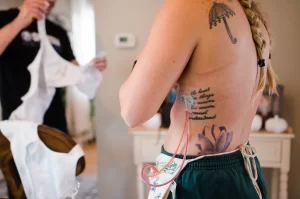
Some other experts, who focus more on systemic treatments, are a medical oncologist–a doctor who uses chemotherapy,
hormone treatment, immunotherapy, and other medicines to battle cancer and a plastic surgeon
who–as you may know–is there to reconstruct or repair parts of the body.
Local, or topical, treatments treat the tumor without affecting the rest of the body; surgery
and radiation are local treatments. Depending on the type of breast cancer, its stage, and your
overall health, you may need other types of treatment as well (before or after surgery, or both):
those are called systemic treatments because they reach cells almost anywhere in the body.
Systemic treatments can be given by mouth, put into the bloodstream, or injected in a muscle.
2022 has been a great year for breast cancer treatment, as the FDA approved a new drug
to treat HER2-Low Breast Cancer: trastuzumab deruxtecan (T-DXd). The approval came
through on August 5, 2022 and this therapy is meant to help patients who suffer from HER-2-
Low Breast Cancer that has spread to other parts of the body and cannot be surgically removed.
The clinical trial results for T-DXd were presented by medical oncologist Shanu Modi to this
year’s American Society of Clinical Oncology meeting. The clinical trial was led by Memorial
Sloan Kettering Cancer Center, and according to Dr. Modi, its results redefine how many
patients with metastatic cancer will be treated.
Targeted therapy works by identifying and attacking certain types of cancer cells, but it
doesn’t kill normal cells so its side effects are fewer than other treatments. However, until now
HER2 treatment has not been successful in treating cancer that is HER2-low. During the trial,
patients were given Enhertu (or T-DXd) which targets the protein HER2. The patients who
received Enhertu did noticeably better than the patients who received standard chemotherapy!
The new targeted drug held the cancer of the receivers in check nearly twice as long, and also
increased the survival rate by 35%.
This is wonderful news for breast cancer patients, and a great advancement in breast
cancer research and treatments! To consider if this is the right treatment for you, ask your
medical professional, and seek as much information as possible before you make a decision.
More
By Iris Farrou
05 Oct, 2022
Breast health, Lifestyle Tips, Prevention, Queer Health, Women's Health, Young adults & teens
Best OBGYN Groups in Buffalo, Breast cancer, Breast cancer awareness, Breast cancer awareness month, Buffalo OBGYN, cancer charity, mammogram, When do I need a mammogram
October is best known as the month dedicated to spooky costumes and candy, but it is
also the month dedicated to Breast Cancer Awareness. Apart from skin cancers, breast cancer is
the most common one among American women. Facts show us that 1 in 8 women in the US will
receive a diagnosis of breast cancer in her lifetime, but the really good news is that 65% of cases
are diagnosed at a localized state–meaning that the cancer has not spread past the breast–for
which the five-year survival rate is 99%.
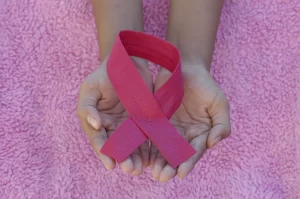
It is also encouraging to hear that there are over 3.8
million breast cancer survivors in the United States alone. The positive facts about breast cancer
assure us that science is working hard to enhance the survival rate for women who are diagnosed
with breast cancer, and is also making great strides to provide successful preventative
techniques.
During the month of October, there are continued efforts to fundraise money for
dedicated breast-cancer research, to support survivors, and to spread awareness and information
to younger women. If you are in Buffalo, NY you may want to consider participating in the
annual Making Strides of Buffalo walk, which is dedicated to making an impact and saving lives,
organized by Roswell Park Comprehensive Cancer Center. This year, the event takes place on
October 22nd, and you can easily sign up for the event on the American Cancer Society’s
website. The event does not have a registration fee, so it is accessible to a greater number of
people.
If you cannot attend the event in person, you can also make a donation, and keep
fundraising going by looking into the Matching Gifts programs: many employers will match
their employees’ charitable donations, or even volunteer hours, thus doubling the impact
individuals make on Breast Cancer Awareness! You can find out directly from your employer if
they are registered for a matching gifts program, or you can use the tool provided by Double the
Donation.
Another great way to support research and other initiatives toward Breast Cancer
Awareness is to create your own fundraising events; many tech-savvy folks set up their own
fundraising pages, or they simply ask their loved ones to collect donations towards this cause in
lieu of birthday, wedding, or anniversary gifts. If you have an online presence, you can easily
bring people together through Facebook or Instagram Live, and even Zoom, to provide support,
share knowledge, and build a community.
Breast Cancer Awareness Month
https://www.bcrf.org/breast-cancer-awareness-month-ideas-fundraising/
More
By Iris Farrou
07 Sep, 2022
Breast health, Breastfeeding support, Health Conditions and Pregnancy, Lifestyle Tips, Mental Health, New Moms, Prevention, Procedures, Queer Health, Reproductive health, Women's Health, Young adults & teens
BRCA Gene, Breast cancer prevention, Breast cancer screening, Breast Exam, Breast Exam Buffalo NY, Breast Exams at Home, Buffalo NY, Buffalo OB-GYN, Cancer in women, Healthy Lifestyle, Self-Exam, Self-Examination, women's health tips
It is common practice at your regular OBGYN appointment for your doctor to perform a breast
exam, by using their hands and examining the overall the look of your breasts. Though this is no
substitute for a mammogram, which adult women are advised to have done yearly, it is a useful
method to see whether there are any visible or tactile abnormalities on your breasts. In fact, 40%
of breast cancers were diagnosed because women noticed something unusual about their breasts.

Is this something I can do at home?
Absolutely—and it is a good idea to perform a self-breast examination once every month. Consider it a monthly inspection you deserve, and one that at the very least helps you learn your body better. Using your eyes and hands for this examination, you can develop your own breast awareness and be able to immediately identify changes—should there be any, fingers crossed not!
What do I do?
First and foremost, it is important to choose a time of the month when your breast will not be as tender since this can cloud the results of the inspection. Ideally, during a time when you are not menstruating or ovulating. Secondly, remember you can (and probably should) ask your doctor or nurse practitioner for a demonstration on how to do this at home.
The most effective technique is to start with a visual examination of your breasts. Stand shirtless and braless in front of the mirror, with no-shadow casting light if possible, and place your hands at your sides. Look for any changes in size, shape, possible asymmetry, dimpling, or puckering. Check to see if your nipples are inverted. Then, inspect your breasts in a similar manner but after raising your hands above your head, palms pressed together forming an A shape. You can also lift your breasts and inspect whether the ridges on the bottom are symmetrical. Should you not trust your own vision, or if you have a visual impairment, it’s a good idea to ask a partner, trusted family member or friend, to help you with this.
Is this all?
The visual inspection is the first step. Next, you want to use the pads of your three middle
fingers. If you can’t sense very well with the pads of your fingers you can use your palm or the
backs of your fingers. You can do the tactile inspection in the shower or lying down (that way,
the breast tissue spreads and it’s easier to feel).
Now, take your time, don’t rush, and establish a routine for this part. If you do it clockwise every
time, for example, and in the same order, then after a few times you will be better able to judge
any changes in the pattern of your breasts. The goal here is to feel the depths of the breast using
different levels of pressure—so you can go over the whole tissue. Closest to the skin, use light
pressure. As you go try to feel a little deeper, use medium pressure. Closest to the chest and ribs,
use firmer pressure.
Remember that you are not looking for anything in particular, you are just learning the patterns
of your breasts. So, take deep breaths, take your time, remind yourself this is being done
absolutely for preventative reasons—just like flossing!
More
By Iris Farrou
19 Oct, 2021
Breast health, Prevention
Best gyns in Buffalo, Best OB practices in Buffalo, Best OBGYN Groups in Buffalo, Buffalo OBGYN, Chouchani MD, WNY OB-GYN, WNY Ob-gyn doctors, WNY OBGYN, women's health, women's health tips
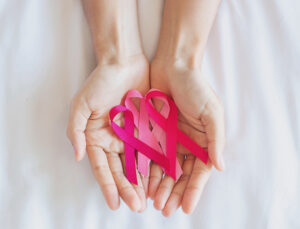 Along with the abundance of pumpkin spiced lattes and corn mazes around the country, October is also the month that brings us a lot of pink in honor of Breast Cancer Awareness. Approximately 1 in 8 women in the U.S. are afflicted, and more than 2 million women were diagnosed with breast cancer in 2020. Chances are, you already know someone who has been affected by this type of cancer. Though educating yourself on prevention and self-care techniques when it comes to it is of high importance, there are also some ways in which you can join the global effort for awareness.
Along with the abundance of pumpkin spiced lattes and corn mazes around the country, October is also the month that brings us a lot of pink in honor of Breast Cancer Awareness. Approximately 1 in 8 women in the U.S. are afflicted, and more than 2 million women were diagnosed with breast cancer in 2020. Chances are, you already know someone who has been affected by this type of cancer. Though educating yourself on prevention and self-care techniques when it comes to it is of high importance, there are also some ways in which you can join the global effort for awareness.
How can I become involved?
- The pink ribbon is the international symbol for breast cancer, and pink has been associated with promoting awareness of it, as well as the efforts made to support women suffering from breast cancer. Wearing pink or adorning your outfit with a pink ribbon is an easy way to showcase support!
- Volunteering locally or nationally is also a good option, and the American Cancer Society (ACS) runs many programs that you can join: Relay for Life, Road to Recovery, and Making Strides Against Breast Cancer are some of them. You can also join one of the many Komen Race for the Cure events nationwide for another fundraising opportunity.
- Share facts and statistics whenever possible. You can do that in social conversations if the subject is brought up, in support of breast cancer survivors, with your coworkers, or with your kids as well if they are old enough to understand.
What are some basic facts I can share?
The National Breast Cancer Foundation and the American Cancer Society are great resources to learn more about breast cancer, access the latest news and statistics, and keep up with the latest scientific discoveries around it. These resources can back up the following US-specific facts:
- Apart from skin cancers, breast cancer is the most common among women
- 1 out of 8 women will receive a breast cancer diagnosis in her lifetime
- Every 2 minutes on average a woman in diagnosed with breast cancer
- There are over 3.8 billion breast cancer survivors
- 63% of breast cancer cases are diagnosed at a localized stage, for which the 5-year survival rate is 99%
How can I lower my risk?
Though there is no sure way to prevent breast cancer and some of the factors may be outside of your control, such as being born female and growing older, here are some basic actions you can take to lower your risk of breast cancer.
- Get regular mammograms to keep tabs on the health of your breasts. Many clinics offer free mammograms in October, so you can take advantage of this opportunity and urge your friends to do the same. Support them, go with them to the appointment, and lead by example.
- Limit alcohol or avoid it: even low intake of alcohol has been linked to increased chances of getting breast cancer, so try to limit it to 1 alcoholic drink a day.
- Maintain healthy weight: especially after menopause, it is important to maintain a healthy weight by watching your diet and exercising regularly, as weight gain and increased body weight have been linked to increased chances of breast cancer.
More

Though the word “mammogram” may ring as scary for many women, it is essentially an X-ray imaging of your breasts to detect a tumor or other abnormalities. There is no suggested or ideal age at which medical professionals agree one should start getting a screening mammogram, but typically women get their first mammogram between ages 35 and 40. Depending on risk level and preferences, women should discuss the options and risks with their doctor.
Remember that getting a screening mammogram does not necessarily mean there is cancer present: even if you get a call back, which is most common in first mammograms, it is most likely to look at a certain area more carefully. An extra ultrasound may be more commonly required in women who are pre-menopausal and get a mammogram done.
Facility Tips
- Choose a facility that specializes in mammograms and conducts a number of them in a day, speaking to its credibility and expertise. To reassure yourself about the standards being met, you may request to see an FDA certificate. If possible, visit the same facility every year so that your record is kept and comparisons may be done easily.
- Get your records from any other facility you may have visited in the past, so the pictures can be compared, and you can save some time.
- Also bring with you a list of places and dates when other mammograms may have been done, as well as biopsies or other breast treatments.
Day of the Mammogram
- Avoid deodorant, cream, or powder under your arms on the day you are scheduled to have a mammogram as those substances may show up as white spots.
- Wear clothes that will make it easy to remove just the top and your bra on the day of the exam.
- Try to schedule the mammogram on a day when your breasts are not swollen, so as to get a better picture and be more comfortable.
The Exam
- Most technologists are women, and you and the technologist should be the ones in the room during the exam. They will position your breasts accordingly for the mammogram.
- Expect your breasts to be compressed between two plates, and the procedure should take about 10-20 minutes, while the breast compression will not be more than a few seconds.
- For a screening mammogram, two views of each breast are required. For women with larger breasts or breast implants, more photos may be necessary.
- There may be some discomfort or pain during the procedure, but you should alert the technologist so they can try and make it more comfortable for you.
Though getting a mammogram does not necessarily mean you have a malignant lump or cancer, you should check with the facility if you don’t hear back from them—until you are certain, you should not assume the mammogram is normal. The best quality of a mammogram is that it can detect breast cancer even if it is too small to be felt; this means that it is diagnosed at a very early stage giving it the best chances at a successful treatment.
More
 The debate on breast care is ongoing with two main schools of thought: those who support the idea that bras are harmful and those who argue that bras are not harmful. Though there may be a gray area, the basic arguments surrounding the effectiveness of bras and their contribution (or not) to breast care seem to fall under these two categories. To help clear up some of the uncertainties, the following bra myths are explained.
The debate on breast care is ongoing with two main schools of thought: those who support the idea that bras are harmful and those who argue that bras are not harmful. Though there may be a gray area, the basic arguments surrounding the effectiveness of bras and their contribution (or not) to breast care seem to fall under these two categories. To help clear up some of the uncertainties, the following bra myths are explained.
Bra Myths
- Bras are Linked to Breast Cancer
This is probably the most common myth that circulates, claiming that wearing a bra increases the chances of developing breast cancer later in life. However, there is no scientific basis for this claim as of yet. According to a 2014 study on 1500 women, there is no correlation between wearing a bra and breast cancer risk. There are other physical and behavioral factors that contribute to the risk of breast cancer, but there is no direct correlation between those and whether you choose to wear a bra or not.
- Bras Stop Breasts from Sagging
When refuting this myth, it is important to consider that bras can rest on many places on women’s chests: some are high, some low, some more to the side, or in the middle, and the fullness changes as you go through your menstruation cycle and other hormonal factors you may be experiencing. As such, the firmness and elasticity of your skin are genetically determined and cannot be fully determined by a product whose use alters day by day. Other factors such as rapid weight gain or loss, as well as smoking may affect the elasticity of your skin.
On the other hand, there are those who claim that wearing a bra will make your breasts sag. As with the argument that a bra stops breasts from sagging, we should remember that—again—elasticity and firmness of skin is genetically determined and behavioral and physical factors may alter it.
- Most Women Wear the Wrong Bra Size
Though this statement may have an element of truth in it, there are no conclusive studies to prove that women make extremely detrimental choices when buying bras. It is understandable that there may be minor mistakes made, such as choosing a design that doesn’t quite fit your body or supports your daily activity habits, but most women will purchases bras that more or less fit their chest area and make them feel comfortable. After all, there is no specific guaranteed that we wear the right bra at any given moment, as our hormones and physical condition (swelling, sweating, sitting etc.) affect our breasts day by day.
As with most other arguments around the safety of bras, some disagree with the idea of wearing a bra in your sleep. There is no scientific evidence to prove that sleeping with a bra on will harm you, and some doctors may even recommend it if your breasts feel sore. If you do choose to sleep wearing a bra, it is recommended that you pick out a lightweight, non-underwire bra. It should not be too tight, neither have parts that dig in as you want to avoid it causing skin/breast irritation or disrupt your sleep.
Takeaway
As with anything else you do for your health, you should make sure that you are comfortable in the bras you choose to wear. Consult your doctor if you experience any persistent or unusual breast pain or if you choose to change your bra habits and are concerned about your breast health.
More
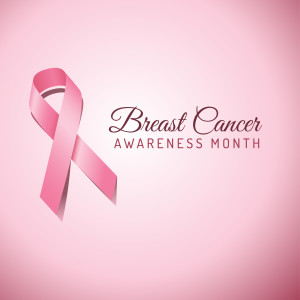 Last week, actress Julia Louis-Dreyfus announced she has breast cancer in a post on her official Twitter account saying, “1 in 8 women get breast cancer. Today, I’m the one”.
Last week, actress Julia Louis-Dreyfus announced she has breast cancer in a post on her official Twitter account saying, “1 in 8 women get breast cancer. Today, I’m the one”.
According to the National Breast Cancer Foundation, one in eight women in the United States will be diagnosed with breast cancer in their lifetimes. While we have made significant strides in breast cancer treatment options, the safest way to protect yourself from this deadly disease is through awareness and early detection. As we spend the month of October wearing pink ribbons and reflecting on those we’ve lost, and those who have persevered, take the time to familiarize yourself with the latest breast cancer screening guidelines. By following a regular routine of administering self-exams, and receiving recommended screenings from your OBGYN, you will put yourself in the best position to help us continue the fight against breast cancer.
Breast Cancer Screening Guidelines
According to the American Cancer Society, the frequency with which women should obtain a breast cancer screenings from their OBGYN is dependent upon age. More specifically:
- Women ages 40 to 44 are recommended to receive a mammogram annually if desired.
- Women ages 45 to 54 are recommended to receive a mammogram annually.
- Women 55 and older are recommended to receive a mammogram every two years but may continue to receive annual screenings if desired.
Regular Self-Exams
In addition to mammography screenings, women should also perform routine self-breast exams. Regular self-examinations help women ensure they are familiar with their breasts so that if any abnormality develops, they can identify the change and make an appointment to be examined by a doctor.
Family History
Women with a personal, or a family history of breast cancer are recommended to receive more frequent screenings. If your mother, sister(s), or grandmother(s) have been diagnosed with breast cancer, talk to your OBGYN. He/she will help you determine when to start receiving regular mammography screenings, and whether or not an MRI is also advisable to test for abnormalities.
Other Risk Factors
In addition to your family history, your doctor will need to have an understanding of other factors that could increase your risk of breast cancer and that may impact when you should begin receiving breast cancer screenings, and with what frequency. Such risk factors may include:
- Your age. A woman’s risk of a breast cancer diagnosis increases with age, particularly up until age 50.
- Childbearing history. The older a woman is when she has her first child, the greater her risk of developing breast cancer in her lifetime. Women who never have children are also at a greater risk of developing breast cancer.
- Menstruation history. Women are at a higher risk of breast cancer if they menstruated for the first time before age 12 or if they go through menopause after age 55.
- Genetic factors. Women with a mutation in the BRCA1 or BRCA2 genes are at a higher risk of developing breast cancer.
If you have any questions or concerns regarding your personal risk of breast cancer, talk to your OBGYN. He or she will be able to discuss your personal risk factors and will help you to determine a routine screening frequency plan that is right for you.
More
 One in eight women will be diagnosed with breast cancer in their lifetime, according to the National Breast Cancer Foundation, Inc. Look around your office, your family gathering, or your next social event and consider the fact that 13 percent of the women in the room will be diagnosed with breast cancer in their lifetime. You may already be able to name family members, friends, and co-workers who have bravely faced a positive diagnosis. The reality that breast cancer has on the women in our lives is staggering.
One in eight women will be diagnosed with breast cancer in their lifetime, according to the National Breast Cancer Foundation, Inc. Look around your office, your family gathering, or your next social event and consider the fact that 13 percent of the women in the room will be diagnosed with breast cancer in their lifetime. You may already be able to name family members, friends, and co-workers who have bravely faced a positive diagnosis. The reality that breast cancer has on the women in our lives is staggering.
In October we honor the victims and survivors of this devastating disease by acknowledging Breast Cancer Awareness Month. However, thirty days every year doesn’t seem like nearly enough time to spend recognizing the impact of breast cancer, especially when you consider that each year over 246,660 women in the United States will be diagnosed with breast cancer, and more than 40,000 will die.
Every month should be breast cancer awareness month. Every month we should honor those we have lost, support those in treatment, and teach the young women in our lives how to lower their risk of being diagnosed in their lifetime. To help you to reduce your own risk of breast cancer, this October, and every month, remember to conduct a breast self-exam. According to breastcancer.org, 20 percent of diagnosed breast cancers are found through a physical exam, rather than by a mammography. To help you to remember to conduct your monthly self-exam, follow these tips:
- Pick a day and stick to it. Choose one day every month for your self-exam and stick to it. Choose a day that’s easy to remember like the first of the month, or a few days after your period ends.
- Buddy-up. Ask a family member or friend to be your self-exam buddy and work to remind one another each month to perform your exams. Holding one another accountable will help ensure you each complete this potentially life-saving task each month.
- Write it on your calendars. All of them. If you’re like most busy multi-tasking women, you have more than one calendar helping you to stay organized. Add your breast self-exam reminder to all of your calendars, including your work calendar, smart-phone calendar, desk agenda, and family planner. When you see reminders in multiple places, a task becomes impossible to ignore.
- There’s an app for that. There are a variety of free Apple® and AndroidTM mobile apps that can help remind you to perform your breast self-exam each month. Pick the app with the features that best meet your needs.
- Sign-up for an email reminder. If you prefer to have your task reminders pop into your inbox, sign-up for a monthly breast self-exam reminder from the Maurer Foundation or cancer.org.
This October, make a promise. Make a promise to yourself and to all the women in your life that you will keep breast cancer awareness and prevention top of mind not just in October when we are surrounded by pink ribbons and advocacy walks, but all year long. With a perpetual focus on the importance of preventing and treating this disease, we face the best odds of reducing our number of annual victims from 40,000 to zero.
More









